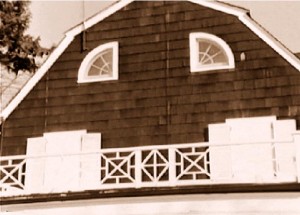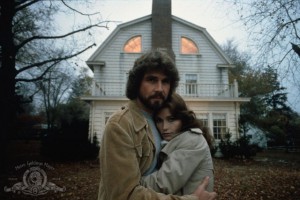Over the years, John G. Jones has been asked every conceivable question about the facts and legends surrounding “The Amityville Horror” – the story of what happened to George and Kathy Lutz and their family when they lived for a short time at 112 Ocean Avenue in the quiet town of Amityville, New York. It’s a story that has been told and retold for almost forty years, and with every telling it has drifted farther from the facts, like a game of “Telephone” that has lasted literally a lifetime.
It’s time to set the record straight.
The Facts
In December, 1975, George and Kathy Lutz and their three children moved into the house at 112 Ocean Avenue in Amityville, New York. Less than four weeks later, on January 13, 1976, they left the house with little more than the clothes on their backs and fled to Kathy’s mother’s home. They left the state shortly after. Neither George nor Kathy ever returned to Ocean Avenue.
The Lutzes were owners of a successful, multi-generational family business; though they had put a great deal of their money into the house, they were not known to be in deep financial trouble, nor were they known to be storytellers, scam artists, or “oddballs.” They were by all accounts a normal young couple trying to raise their children. But soon after they fled, they sold their dream house — the house they had purchased just a month earlier — at a substantial loss, and had intermediaries sell virtually everything in the home at auction, from a distance.
One last set of facts: the previous owners of the home, the DeFeo family, were murdered in their beds by their son Ronald, in December 1974 – roughly a year before the Lutzes purchased the home and moved in. Ronald DeFeo confessed to the murders, and although there were a number of strange, seemingly unanswerable questions surrounding the facts of the case, general circumstances and ample corroborative proof sent him to prison to serve six concurrent sentences of 25 years to life. DeFeo is still alive and held in Green Haven Correctional Facility in Bekman, New York. All of his appeals and requests for parole have been denied.
George and Kathy Lutz divorced in the late 1980s. Kathy died of emphysema in 2004; George died of heart disease in 2006. There was nothing particularity suspicious or eerie about their deaths.
That is the sum total of all the demonstrable facts surrounding the Lutz family’s experiences in Amityville. Everything else – including what they said happened, including the reports and research by professionals and amateurs since then – simply cannot be proven.
The evolution of a best-seller…and a worldwide phenomenon
More undisputed facts: shortly after they left the house, a book editor at Prentice Hall introduced George and Kathy Lutz to Jay Anson, a professional writer who had published a number of “behind-the-scenes” and “making-of” books about films and film personalities in the 1970’s. Though the Lutzes did not work directly with Anson, they did submit about 45 hours of tape-recorded recollections to him, which he used as the basis for his book. That book, The Amityville Horror, was published in 1977. It has sold more than 11 million copies in the years since. Anson went on to write a horror novel of his own, 666, which was published in 1980, shortly after his death from heart disease.
The best-selling Amityville Horror book was made into a movie starring James Brolin and Margot Kidder. (Anson wrote the original screenplay, but the producers passed on it and hired a more experienced screenwriter, Sandor Stern.) At the time of its release in 1979, The Amityville Horror was the most successful independent movie in history; grossing more than $86 million (in 1979 dollars) in US box office revenue alone, as well as millions more in video sales, syndication, and the like. The remake of the original story, this time starring Ryan Reynolds, released in 2006, made a great deal more.
John G. Jones met George and Kathy Lutz through mutual friends in California in the early 80’s. Soon after they met, the Lutzes asked John to tell the continuing story of what happened after they left the infamous house in Amityville in 1976. John agreed. His first book, Amityville Horror II, was published in 1983 by Warner Books. Within a week it was on the New York Times Bestseller List. Soon after it became an Internationalbest-seller. Other highly successful Amityville Horror volumes followed.
Because “Amityville” was a town in New York State long before it gained its dark and entirely undeserved reputation, the normal trademark and copyright protections to the “Amityville” story often didn’t apply. Any book, TV program, or movie could use the world “Amityville” in its title to imply some connection to the Lutz story or the blockbuster film, and the list of unauthorized horror stories grew every year and continues to grow. The net effect has buried the real story in layer after layer of error, speculation, and outright lies. The trick is to tell one from the other.
So what actually happened to the Lutzes in Amityville?
Over the years, their story has been told and retold, distorted and recast, so many time and for so many reasons, that only the facts above can actually be proven. But a few of the most common misconceptions should be addressed:
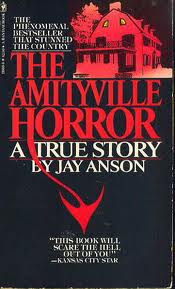 Jay Anson didn’t get it 100% right. Like any storyteller, Jay Anson embellished some scenes, omitted others, and simply made some mistakes in his version of the story, even though it was based on the Lutz’ own tapes (These tapes have never been released; there’s some doubt if they still exist at all.). Inaccuracies on inconsistencies in dates, a precise sequence of events, even the weather itself, can be chalked up to poor recollection, a lack of fact-checking, and dramatic license.
Jay Anson didn’t get it 100% right. Like any storyteller, Jay Anson embellished some scenes, omitted others, and simply made some mistakes in his version of the story, even though it was based on the Lutz’ own tapes (These tapes have never been released; there’s some doubt if they still exist at all.). Inaccuracies on inconsistencies in dates, a precise sequence of events, even the weather itself, can be chalked up to poor recollection, a lack of fact-checking, and dramatic license.
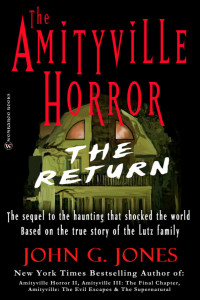 A final, complete version of what happened to the Lutz family after they fled Amityville will be published in 2015. John G. Jone’s The Amityville Horror II and subsequent volumes that touched on the lives of the Lutzes have been out of print for years; a fully revised, updated, and enriched version of “the rest of the story” will be published as The Amityville Horror: The Return in 2016. It is derived from Jones’ own lifetime of experience and contact with the Lutz family, and now that George and Kathy have both passed away, it will serve as the final and definitive word on what happened next, and how it ended.
A final, complete version of what happened to the Lutz family after they fled Amityville will be published in 2015. John G. Jone’s The Amityville Horror II and subsequent volumes that touched on the lives of the Lutzes have been out of print for years; a fully revised, updated, and enriched version of “the rest of the story” will be published as The Amityville Horror: The Return in 2016. It is derived from Jones’ own lifetime of experience and contact with the Lutz family, and now that George and Kathy have both passed away, it will serve as the final and definitive word on what happened next, and how it ended.
The Lutzes did not dream the whole thing up with an attorney back in 1976. In fact, there was an attorney deeply involved in the DeFeo case, and later in lawsuits brought by the Lutzes and by the attorney himself, where he claimed that that he, George, and Kathy concocted the story, though he offered no contemporaneous notes or agreements to prove his allegations. The Lutzes denied this, repeatedly and consistently, though the attorney continued to make his unsupported claims for quite some time.
George and Kathy Lutz stood by their story for their entire lives. This much is true: George and Kathy Lutz never changed their story. Until their deaths, they maintained that what was in the book was “mostly true” – allowing for the errors and embellishments mentioned above. In June 1979, George and Kathy took a lie detector test concerning the events in the house, and they passed. Even twenty-five years after their time in Amityville, in a documentary on the History Channel, George said, “I believe this has stayed alive for 25 years because it’s a true story. It doesn’t mean that everything that has ever been said about it is true. It’s certainly not a hoax. It’s real easy to call something a hoax. I wish it was. It’s not.”
This is the central difficulty with “proving” or “debunking” the Lutzes’ story. Virtually all of the events that the Lutzes described are private matters, matters of perception and nightmare. They cannot be proven or disproven objectively; they can only be believed or disbelieved.
It’s pure speculation, but it’s probably worth noting that the whole field of “true horror stories” that is such a lucrative industry today simply didn’t exist in 1976. The Exorcist – a novel and film that was published as fiction, not fact – had only appeared a couple of years before; Poltergeist and the subsequent array of “modern day hauntings” that would become a profitable subcategory of the horror genre were years in the future; in fact The Amityville Horror’s unexpected success was key in creating that subgenre. It would have been a feat of near-paranormal prescience to think that a best-seller and blockbuster movie could be based on this kind of subject matter at the time the Lutzes made their recordings, especially from a couple with no real experience in media relations, publishing, or film production. It’s certainly not impossible, but it’s highly unlikely.
The Lutzes did not get rich from the books and movies. Yes, they received a portion of the royalties or licensing fees for some of the books and a few movies, but it was never a great deal of money, and it faded quickly. After a life of comfort and stability in New York, the Lutzes, as a family and as individuals, struggled financially for the rest of their lives. Amityville didn’t make them rich, not even in the beginning.
The house is not built on an Indian burial ground. At least, the Lutzes never claimed it was. Many of the unauthorized books and films speculated about power spots, burial grounds, seventeenth-century warlocks, and other even more unprovable histories for the property. None of them were put forth by the Lutzes, and none of them have a strong basis in provable historical fact. Just ask the Amityville Historical Society.
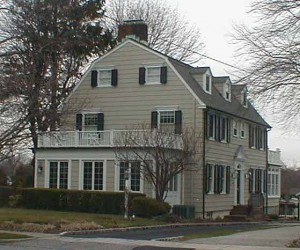 The family that purchased 112 Ocean Avenue from the Lutzes claimed they experienced no supernatural events of any kind. And that is consistent with the Lutzes story. The house remained empty for months after the Lutzes left, but when the Cromarty family bought it in 1977 – for thousands less than the Lutz’ purchase price – they reported no damaged fixtures, no strange smells or apparitions. However, from the beginning, the Lutzes claimed that the force they encountered in their home followed them when the left, and continued to plague them wherever they fled for years after. And they first made these statements before the house was sold. So two interpretations are equally possible: there was never any evil force in the house in Amityville, or it left with the Lutzes. Either way, the house itself would be ‘safe’ and quiet after January 1977.
The family that purchased 112 Ocean Avenue from the Lutzes claimed they experienced no supernatural events of any kind. And that is consistent with the Lutzes story. The house remained empty for months after the Lutzes left, but when the Cromarty family bought it in 1977 – for thousands less than the Lutz’ purchase price – they reported no damaged fixtures, no strange smells or apparitions. However, from the beginning, the Lutzes claimed that the force they encountered in their home followed them when the left, and continued to plague them wherever they fled for years after. And they first made these statements before the house was sold. So two interpretations are equally possible: there was never any evil force in the house in Amityville, or it left with the Lutzes. Either way, the house itself would be ‘safe’ and quiet after January 1977.
By the way, the house has been renovated and the address changed to discourage the constant stream of gawkers. The whole facade has been altered; the ‘evil’ windows have long since been replaced. Every movie or television program that shows the house has used alternative sites or built facades to resemble the original house, and the people of Amityville do not welcome ghost-hunters or fans of the paranormal.
In the end, there are only the facts: One day in December 1975, an apparently happy, apparently stable young family moved into their dream house in a great little town on Long Island…and less than a month later they literally ran screaming from that house, never to return. They abandoned their comfortable lives and fled to the far side of the country, three young children in tow, with no money, no employment prospects, and no plan.
Why? There are only three possible explanations:
- This previously sane and unassuming couple risked their kids (and their livelihood) on a bizarre and previously unimagined get-rich-quick hoax, and the plot failed.
- The entire family was victim of some previously undiagnosed case of mass hysteria or group delusion, though there was no previous history of mental disorders in the adults and no reported use of drugs or alcohol that might trigger such behavior.
- The family was plagued by some unknown, unseen force that slowly drove them all to the brink of insanity and ultimately forced them to flee, never to return. Then the entity that found them in Amityville followed them, across the country and around the world. They never fully recovered.

